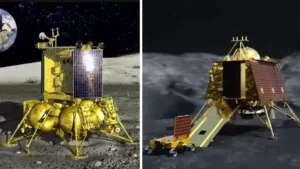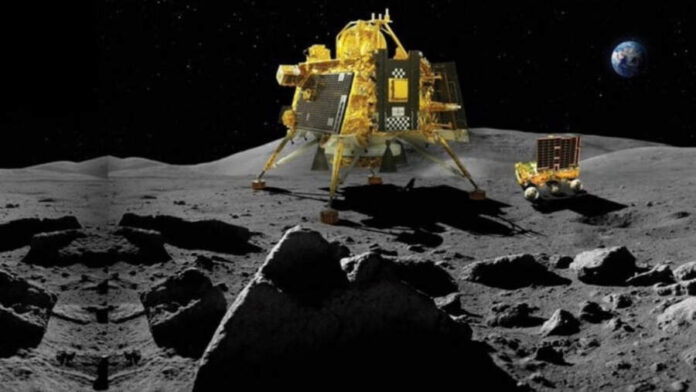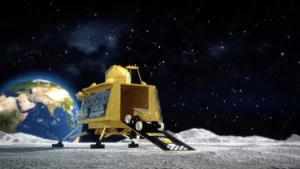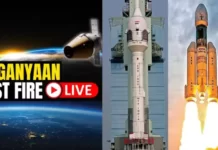Chandrayaan 3 is currently gaining all the limelight across the globe and there is a proper reason for that. It is India’s third attempt at landing on the moon. The previous mission Chandrayaan 2 failed and necessitated the third attempt. All eyes were set on the mission and ISRO.
Finally, as the Vikram Lander touched down the moon’s surface safely on 23 August 2023, India erupted in celebrating the success of the mission. However, there are certain questions which are haunting people around the world. Therefore, if you wish to get your queries answered, then this article would be the perfect place for you to be.
What Is Chandrayaan 3?
Chandrayaan 3 is India’s third mission to explore the Moon. It’s a part of the Indian Space Research Organisation’s Chandrayaan program. This mission includes a lander named Vikram and a rover named Pragyan, just like the ones used in the Chandrayaan-2 mission. The lander and rover were carried to the Moon’s orbit by a propulsion module, getting ready for the lander to safely touch down on the Moon.
Amazing Visuals of Moon🔥🔥♥️#Chandrayaan3 #Chandrayaan3Landing #Chandrayaan_3 #IndiaOnMoon #IndiaOnTheMoon #MoonLanding #MoonMission #NASA #ISRO #isrochandrayaan3mission #ISROScientist #PragyanRover #JaiHind pic.twitter.com/GjKztS6Ivs
— Rohit Mehta (@rohitmehta0) August 24, 2023
#Chandrayaan3 #Chandrayaan3Landing #Chandrayaan_3 #IndiaOnMoon #IndiaOnTheMoon #MoonLanding #MoonMission #NASA #ISRO #isrochandrayaan3mission #ISROScientist #PragyanRover #JaiHind

The Historic Touchdown
At around 6:15 pm IST, on August 23, 2023, Chandrayaan 3 successfully touched down on the moon. With this, India became the fourth country to demonstrate a successful soft landing on the moon. Together with that India also became the first country to land its rover on the South Pole of the moon. However, the soft landing is only a partial aim of the mission, which started off on 14 July 2023. That is the point that raises questions as to what will the rover do now as it has reached its destination.
The Pragyan Rover: What’s To Follow Next?
The name ‘Pragyan’ comes from a Sanskrit word meaning wisdom. It is a rover with six wheels designed to explore the Moon’s surface. The rover can travel up to 500 meters every day on the Moon, studying its different landscapes. It has various tasks to perform on the moon. They are:
Chandrayaan-3 Mission:
The rover was rotated in search of a safe route. The rotation was captured by a Lander Imager Camera.It feels as though a child is playfully frolicking in the yards of Chandamama, while the mother watches affectionately.
Isn’t it?🙂 pic.twitter.com/w5FwFZzDMp— ISRO (@isro) August 31, 2023
- The main objective of the rover is to study the geology of the Moon, providing a better understanding of the history of the satellite.
- It will investigate the moon’s surface for magnesium, silicon, potassium, calcium, iron and more.
- The rover is also designed to study the strange atmosphere of the moon and thereby try to understand the irregular cycles of day and night on the satellite.
- Another mission of the rover is to study the regolith or moon dust.
- It will also produce a 3D representation of the Moon’s terrain using its stereoscopic 3D camera.
- All this while, the Vikram Lander will function as the transmission centre, sending information received from the rover back to the ISRO control room.
The 14-Day Window
Both Vikram Lander and Pragyan Rover are powered by sunlight. So, 14 days after its touchdown, there will be a night on the moon for another 14 days. So, both the lander and the rover will stop working after the first 14 days. However, there also remains a chance that when the sun again rises on the Moon after 14 days, both of them might start working again. But, that is only a possibility. So, primarily ISRO has a 14-day window to conduct their experiments and operations on the lunar surface.
Chandrayaan-3 project costed less than the actual space movies … let that sink in ! 😳 pic.twitter.com/J0wpj5JnFp
— حسن سجواني 🇦🇪 Hassan Sajwani (@HSajwanization) August 24, 2023
Also read: Bridging the Gap: Quantum AI and Traditional Technical Analysis




































































